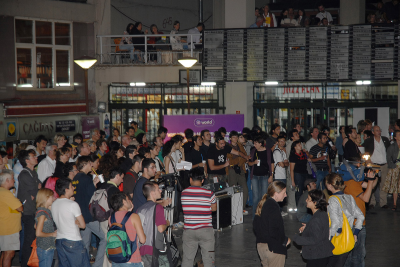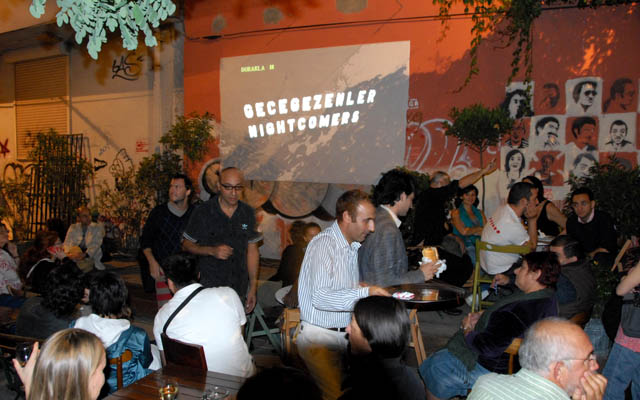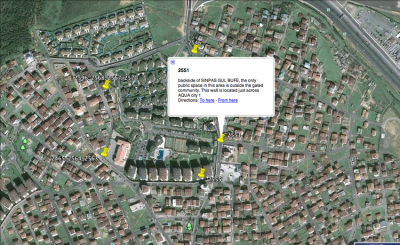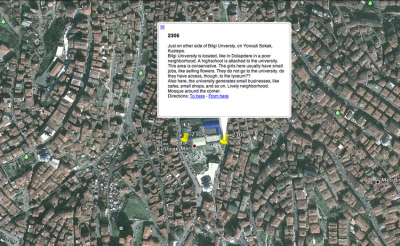
Istanbul,
59 Locations
(A Format For Nightcomers)
Istanbul Biennial
2007
Istanbul, 59 Locations: A Format For NightcomersIstanbul, 59 Locations: A Format For
Nightcomers, provides a screening format for Nightcomers, one
of the night programme projects of the 10th International Istanbul Biennial (September 8 - November 4, 2007).
During the Cultural Revolution in China in the
1960s and 1970s, the 'lower class'was encouraged to post their critiques on the elite in the form of 'Dazibao'(a journal/poster with large letters). Street corners became public forums. In spite of totalitarian propaganda, this approach showed a form of radical democracy, and even assumes an urban guerrilla-like insurgency.
It is no surprise that the 'Dazibao'was banned in China after the Cultural Revolution precisely because it contributed to the challenge of totalitarian rule; it became the voice that claimed for reform and an openness from the 'bottom'of society. The famous 'Wall of Democracy'in Xidan, Beijing, was the most remarkable example.
What is the most democratic form of expression
in our age of new technology and global
communication?
How can it be demonstrated in the urban space today? A 'Video Dazibao'may be an answer.
For the 10th International Istanbul
Biennial, five curators from Turkey have been invited by Biennial curator Hou Hanru to select over 150 short video works from an open-call to the public. During the nights, the program, under the title of 'Nightcomers', were projected in public spaces in different parts of the city, from the centre to the periphery.
Bik Van der Pol were invited to design a format
for Nightcomers. Instead of designing an
architectural structure, they developed a
specific simple screening format for possible
screenings on different locations all through Istanbul and a guidebook, in order to create a normal, everyday public access to the biennale for thousands of people living in areas who would normally not get in direct contact with contemporary art.
With ideally 59 screenings - one every night for the whole duration of the Biennial - throughout the city on different locations, Nightcomers continuously appeared and disappeared.
 dazibao
dazibao
 dazibao
dazibao
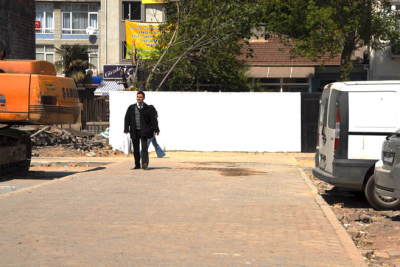





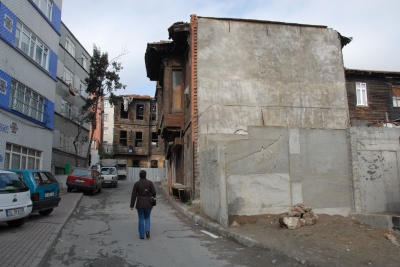
Every night a small team equipped with car, projector, sound system, paper, brush and paste, moved into the city to one of the locations, and paste white paper posters onto the wall, which formed the screen for the video program of Nightcomers.
After the screening, the white paper walls leave a phantom-like trace in the city, and these white spots slowly sink, in time, back in the urban tissue of the city.
For their research, Bik Van der Pol explored the different neighbourhoods of the city, searching for walls of inhabited, run-down or empty buildings, factories and houses, fences, car park walls.
Some of the locations are in urban transformation, in an uncertain state, on the verge of new developments, or not always without (political) conflict. Other locations are the result of (sometimes conscious) neglect by the city authorities or the result of a powerplay between local and national government or even illegal developments (large works such as tunnels, hotels, roads or whole housing areas), sanctioned by the authorities.
With the help of students, urban sociologists, residents, and others, Bik Van der Pol mapped, described, recorded and photographed every location. Together these locations create the facts and fictions that form the underlying structure of a city.
The small guidebook with the title 'Istanbul. 59 Locations, A Format For Nightcomers', designed by David Bennewith and Sandra Kassenaar gives an overview of all the locations, thus creating access, allowing a glimpse in the wide variety of Istanbul's daily dynamics, and invites the public to embark on a trip.


